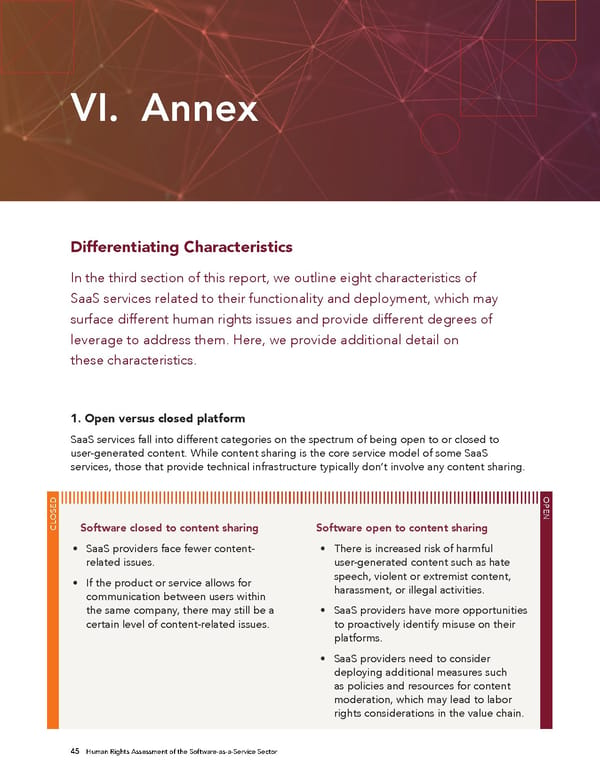VI. Annex Differentiating Characteristics In the third section of this report, we outline eight characteristics of SaaS services related to their functionality and deployment, which may surface different human rights issues and provide different degrees of leverage to address them. Here, we provide additional detail on these characteristics. 1. Open versus closed platform SaaS services fall into different categories on the spectrum of being open to or closed to user-generated content. While content sharing is the core service model of some SaaS services, those that provide technical infrastructure typically don’t involve any content sharing. OPEN CLOSEDSoftware closed to content sharing Software open to content sharing • SaaS providers face fewer content- • There is increased risk of harmful related issues. user-generated content such as hate • If the product or service allows for speech, violent or extremist content, communication between users within harassment, or illegal activities. the same company, there may still be a • SaaS providers have more opportunities certain level of content-related issues. to proactively identify misuse on their platforms. • SaaS providers need to consider deploying additional measures such as policies and resources for content moderation, which may lead to labor rights considerations in the value chain. 45 Human Rights Assessment of the Software-as-a-Service Sector
 Human Rights Assessment of the Software-as-a-Service Sector Page 45 Page 47
Human Rights Assessment of the Software-as-a-Service Sector Page 45 Page 47